
The Toyota Corolla is the best-selling car in the world. As of 2016, 44.1 million Corollas had been sold, far outstripping other bestsellers like AvtoVAZ's Lada 2100 series and the Volkswagen Beetle. Now, these astronomical sales numbers are of course cumulatively counted over every generation of the Corolla since its inception in 1966; counting sales by specific model revisions would likely show a different winner. However, the fact remains that Toyota's compact family sedan has been wildly successful, and its reputation as the de facto compact option has been cemented. Considering the significance that we place upon automotive nameplates, and on names and symbols in general, any new Corolla, no matter how revolutionary its design relative to its ancestors, must exist as a member of a lineage, not as a standalone model. No Corolla built today exists outside the brand context that it has built for the last 50-odd years. Much like other cars with nameplates that bear particular significance, like the Golf GTI and its celebration as the original hot hatch, or the Dodge Charger and the way it tries to recall the muscle car heyday of the late 1960s, the Toyota Corolla's name calls to mind all the qualities that would make a family compact so successful. In other words, the newest generation of the Corolla, released as a 2019 model, had very big shoes to fill.
What is it like?
We begin with the exterior. From the previous generation, the new Corolla looks leaner and more athletic, with the seemingly obligatory huge grille and wide, angular headlights, mirroring Toyota's design decisions across their product range. The lines have been subtly remolded to make it appear a little less bubbly, particularly around the A and C pillars, but Toyota seems to have taken care to limit their enthusiasm here, with the new Corolla still being generally similar in appearance to the previous generation, sharing a similar silhouette and rear end. Despite the refresh, the Corolla generally doesn't stand out from other compact sedans, though with a more conventional silhouette, its lines are somewhat different. The major stylistic break from the norm is the new front end, with the wide and deep grille, wide, expressive headlights, and a conspicuous absence of cheek vents for fog lights to reside in. A protruding, splitter-like lip at the bottom of the bumper and a pair of fake front wheel well vents complete the athletic looks, even on trims like the LE.

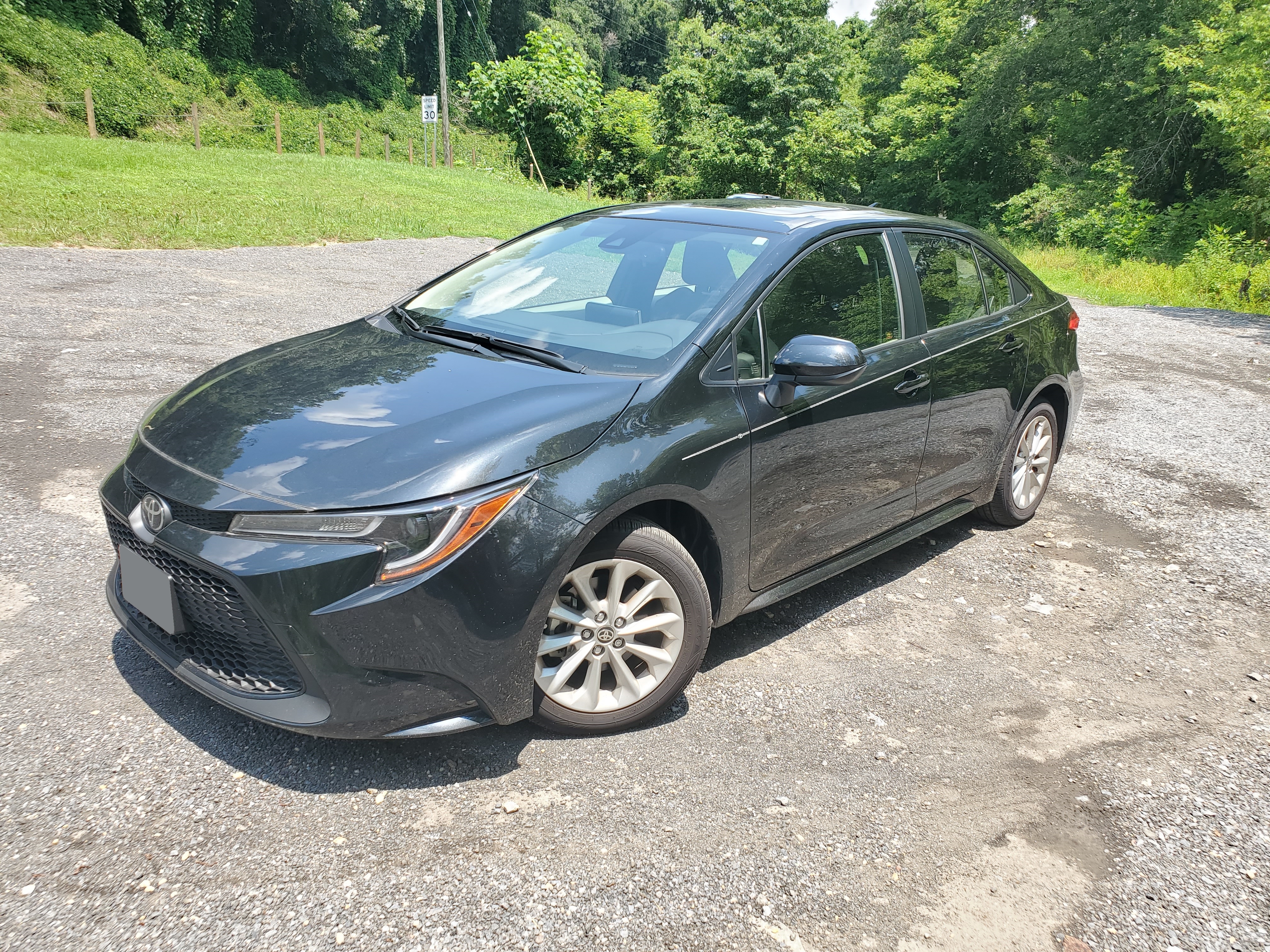
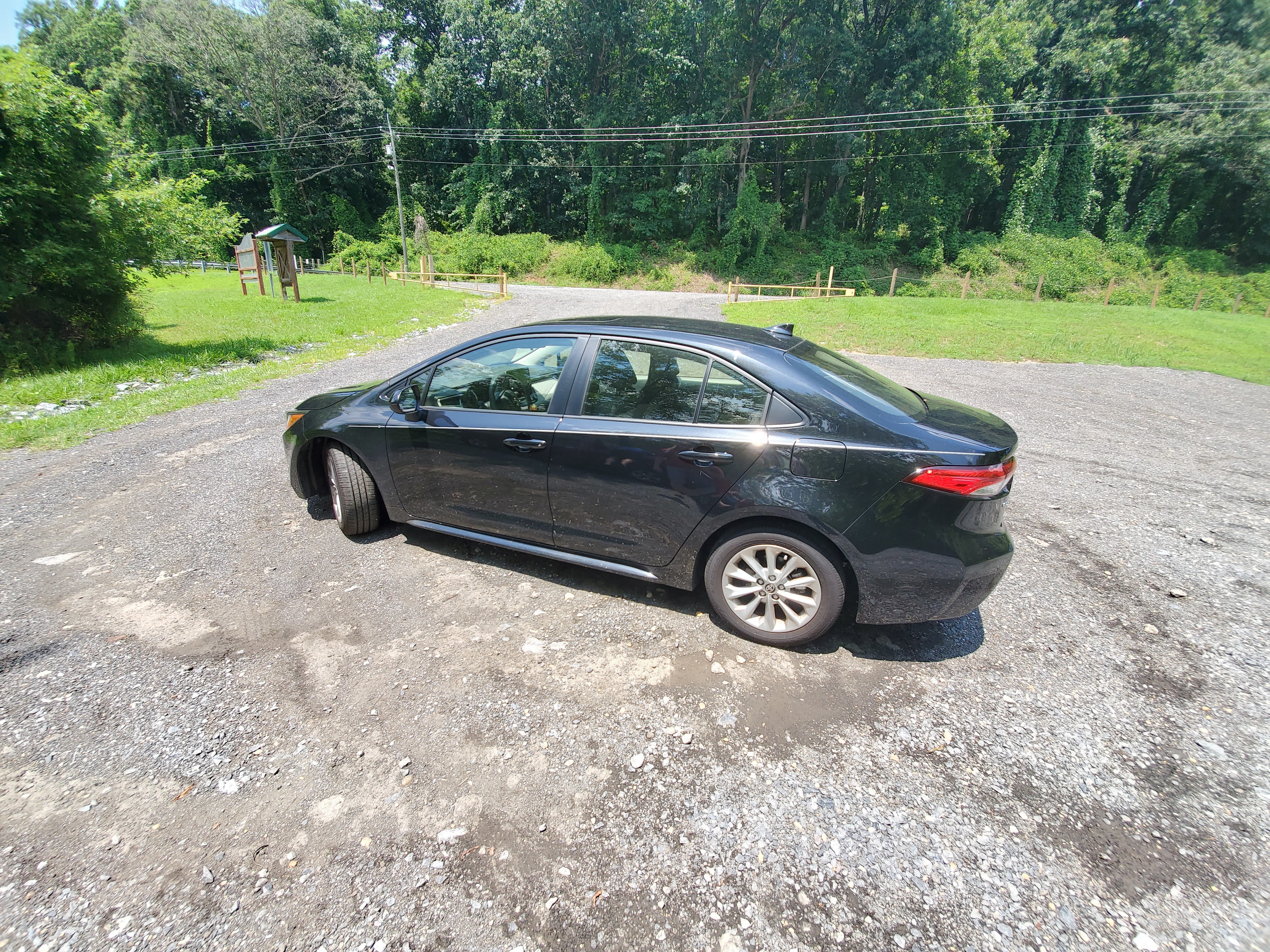
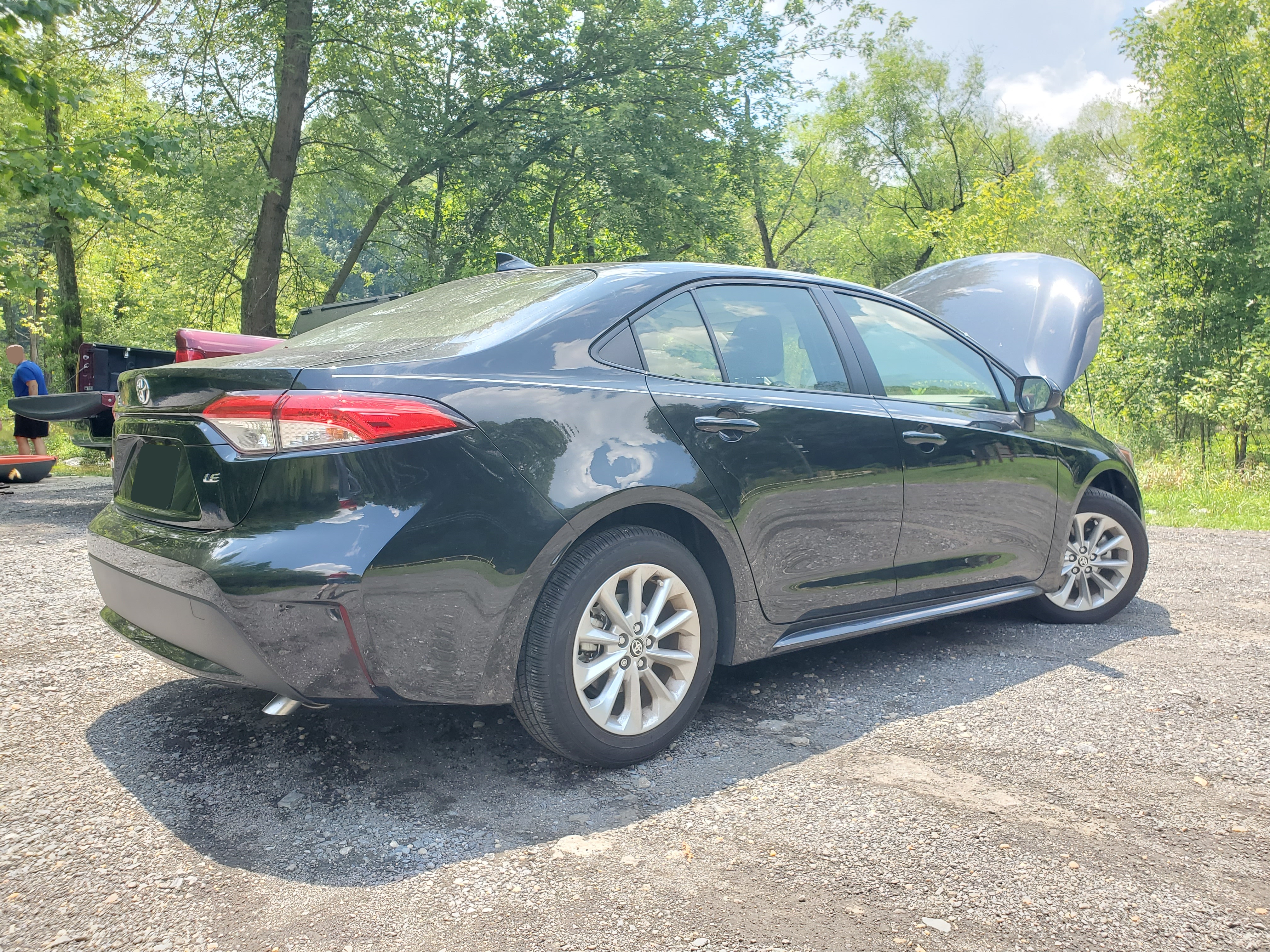
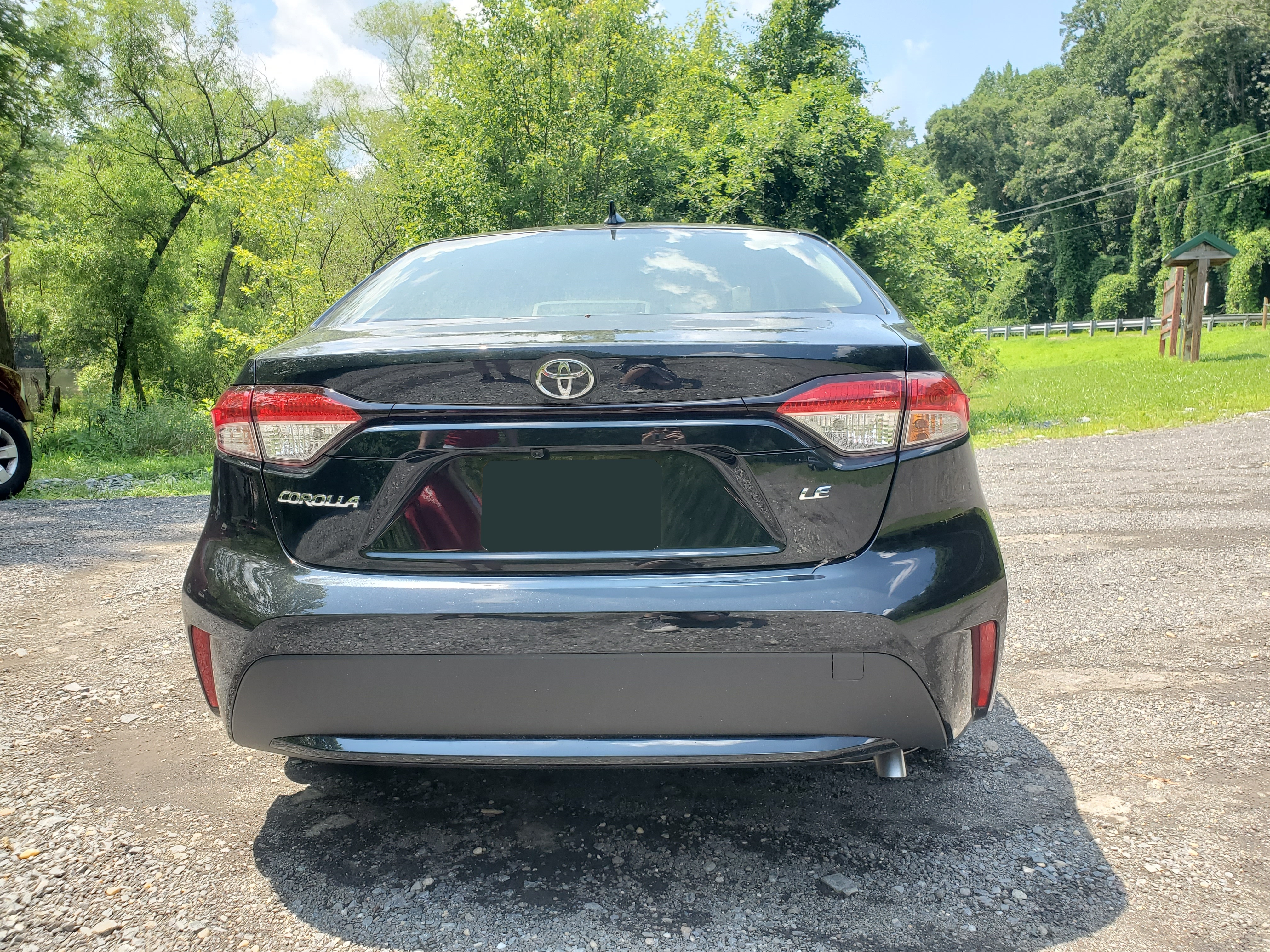
The interior styling diverges from the previous generation much more strongly, with a much different design concept arising. The current Corolla adopts the style which came into vogue in the mid-late 2010s, with a sleekly profiled dash, with lower and upper strongly divided, with a free-floating central console and a sleek, pared-down center stack. This is quite different from the 2016 Corolla's maximalist, shape-heavy dash styling. Much of the change is likely down to the switch to a freestanding tablet-style infotainment display, which compacts all the stereo functions much more effectively than the previous design did. The infotainment system itself is nothing special, with a fairly responsive main touchscreen as well as a more vehicle-focused multifunction display in the instrument cluster, both of which are fairly standard for 2020.
In general, the Corolla's interior reflects what is in vogue for current car design. It features an aggressive, evocative dashboard, a relatively simple and sleek central console with a freestanding infotainment display, and a variety of interior materials in order to make the cabin feel less budget-oriented. The interior features feel more solid and well-built than Nissan's, but the seats certainly feel like those of an economy car; though not uncomfortable, they are firm, and the bolsters seem more for style than effect, given their lack of support during cornering. Where the Corolla's interior genuinely impresses is in its packaging. Toyota has managed to achieve both a deep rear seat area (again, with acceptable, if not fantastic cloth seats), as well as a sizeable trunk, both of these having been accomplished without a bulbous exterior. One begins to wonder whether the huge growth of ridesharing apps has had a tangible influence on the design of economy cars' rear seats.
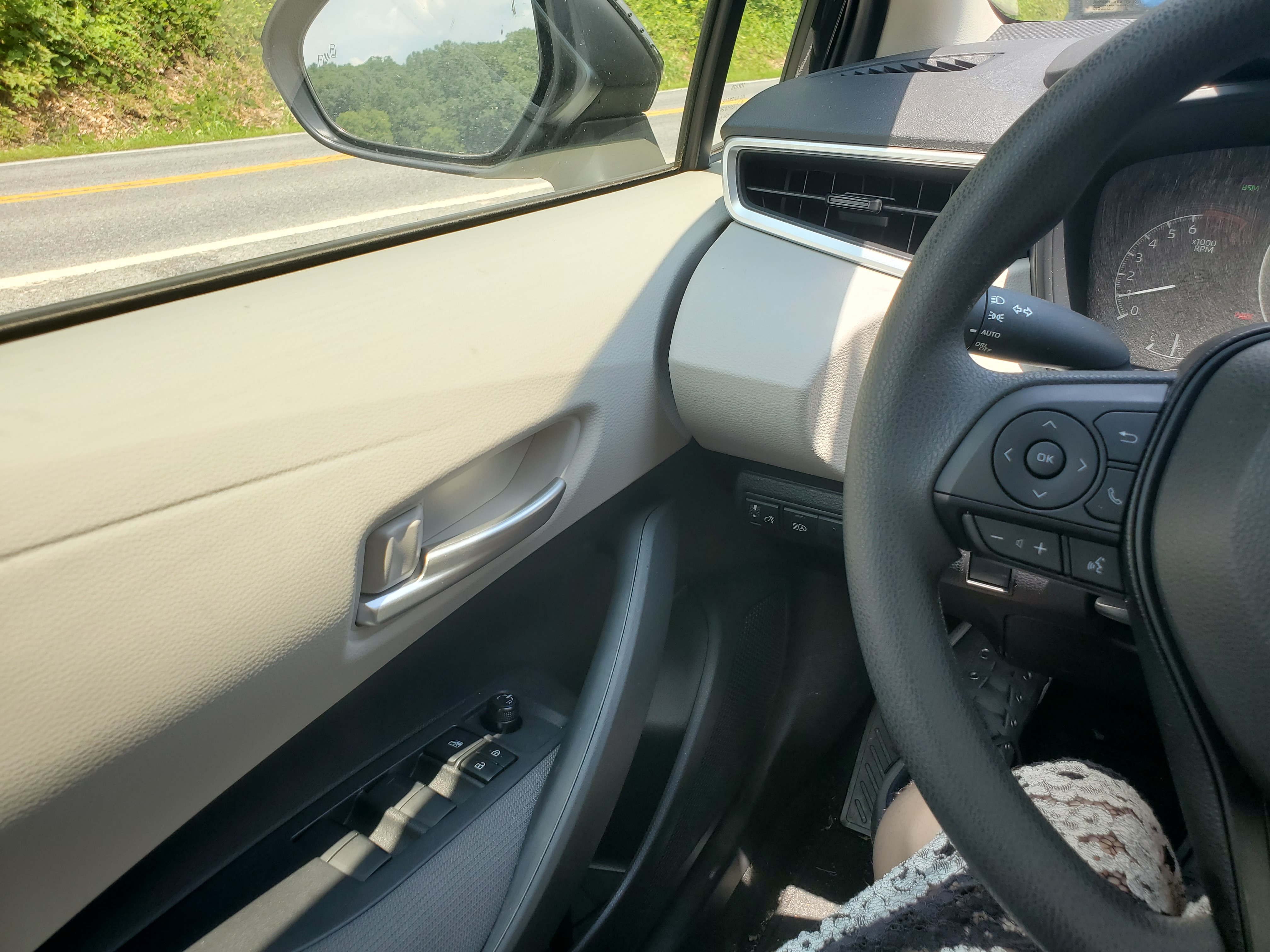

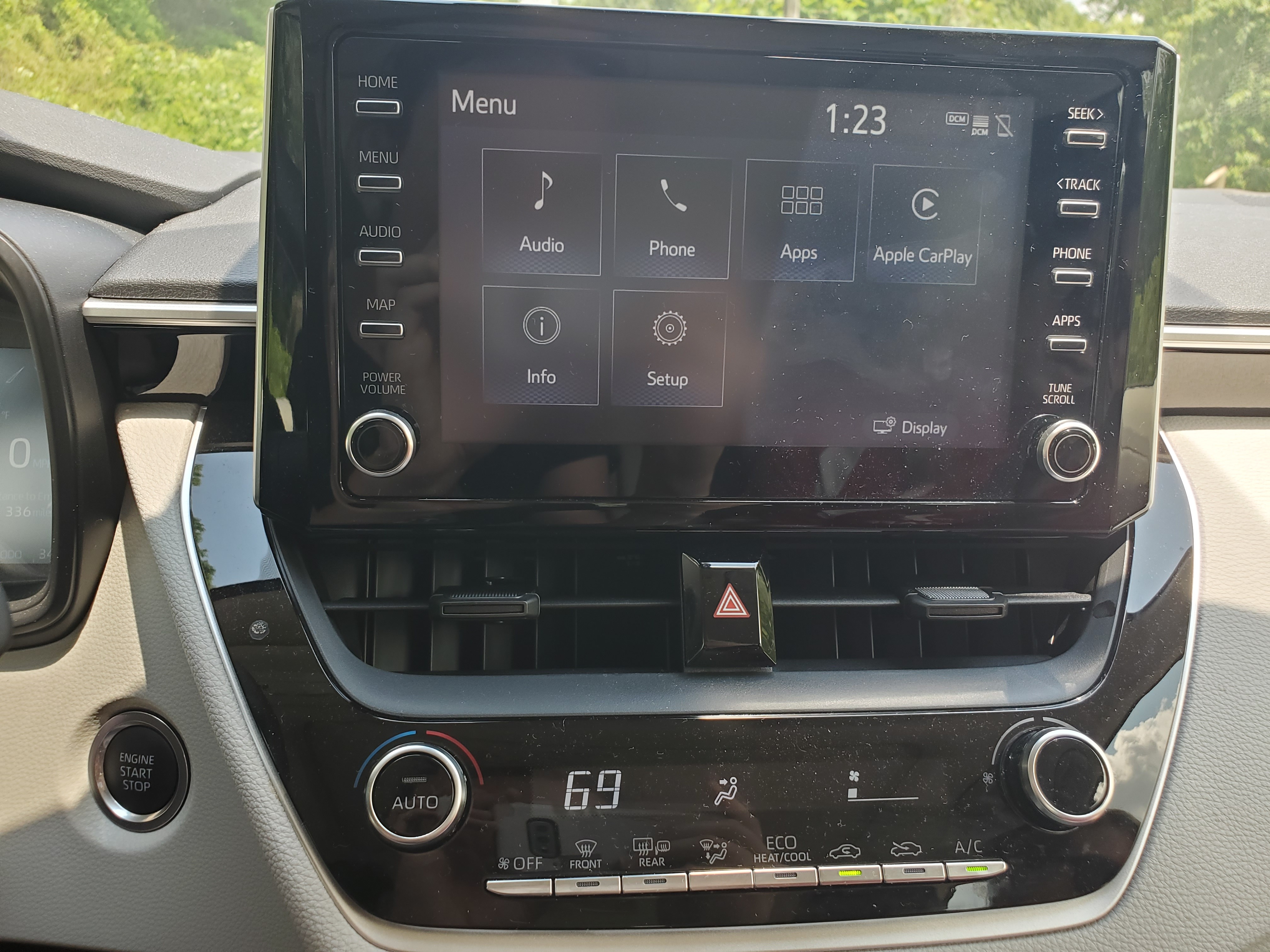
How is it to drive?
The current Corolla enjoyed several major changes from the previous generation, most notably a new transmission design as well as a switch to Toyota's new global platform, which in its implementation in the Corolla, uses a multilink rear suspension system instead of the old torsion beam. The switch to the new suspension design is not necessarily a panacea, however, as the highly tunable nature of such suspension designs mean that the designers are free to impart whatever ride experience they may please. In the case of the Corolla LE, what this means is that the Corolla generally exhibits docile handling appropriate for its market niche. NVH is exceptionally well controlled, with cabin noise being truly impressive for the Corolla's price point, and that is backed up by a suspension damping scheme that absorbs road harshness and bumps extremely well, conveying a more refined ride than many modern compacts do, even with the massive leaps in comfort that all modern suspensions have made. A multilink suspension does not a track monster make, however, and the Corolla LE exhibits truly economy car-like handling in more dynamic driving. Corner turn-in feels reluctant, if predictable, and understeer comes on quick in spirited corners, though the pleasantly stiff and communicative steering alerts the driver of this early. The Corolla, for all its comfort, does not feel particularly at home when driven hard, though it never loses so much composure as to feel dangerous. Perhaps that is itself the true intention of the Corolla's ride engineering, and we must again recall that there are very few low-performance cars. Instead, the Corolla LE has optimized for performance characteristics other than simply sporty handling; after all, predictability is just as much an axis of performance as razor-sharp cornering. And, quite frankly, the Corolla excels at predictability. As mentioned previously, the steering does not feel smooth and numb as electric power steering is so wont to do, perhaps except at very low speeds, and the driver is afforded a good deal of road feedback through the wheel, if not through the chassis. The Corolla shifts its weight well enough for quick, if not fast driving, and the limits of grip are both accessible and predictable, be that good or bad. If the SE and XSE use different suspension tuning, which they very well may, their driving experience is likely more confident and willing in corners, if sacrificing some of the LE's budget-luxury feel.
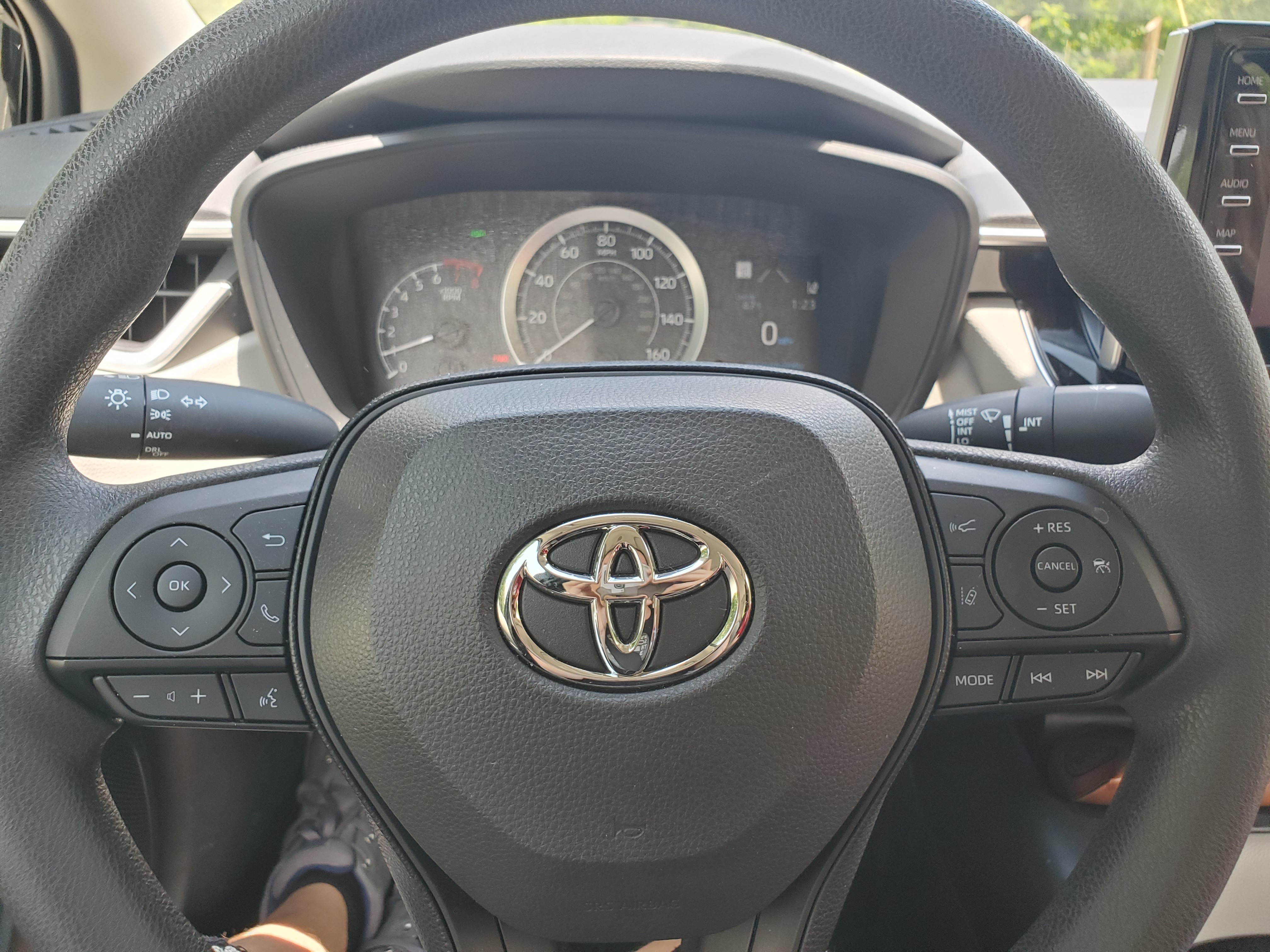

The other major addition for the current Corolla is Toyota's new two-stage CVT design, which is equipped with a fixed launch gear as well as a continuously variable ratio gear. Drivers of the SE and XSE trims get to control this transmission with a manumatic mode, while the L, LE, and XLE use the same physical transmission without the manumatic option. In truth, the absence of this does not affect the driving experience hugely, as the transmission's control logic is quite well programmed, with some caveats. Fake-automatic shifting comes occasionally, but very infrequently, with the transmission usually taking full advantage of its variable ratios. Flooring the accelerator really only allows the engine to reach redline when launching from a stop, with the transmission topping the engine off around 5000 rpm otherwise. One can shift to the "B" detent while driving, which, as in Toyota's Prius line, makes heavier use of engine braking. However, because what this really does is bias for higher engine speed, B can also be used to make passing, grades, and fast corners easier on the driver. When setting off, the shift from the solid launch gear to the CVT range is imperceptible in the LE trim, and the car instead feels totally normal at low speeds. Compare this to the current Nissan Altima's curious CVT programming at low speed, with a clunky torque engagement, likely due in no small part to the absence of a launch gear. Hopefully Toyota's design catches on with other manufacturers.
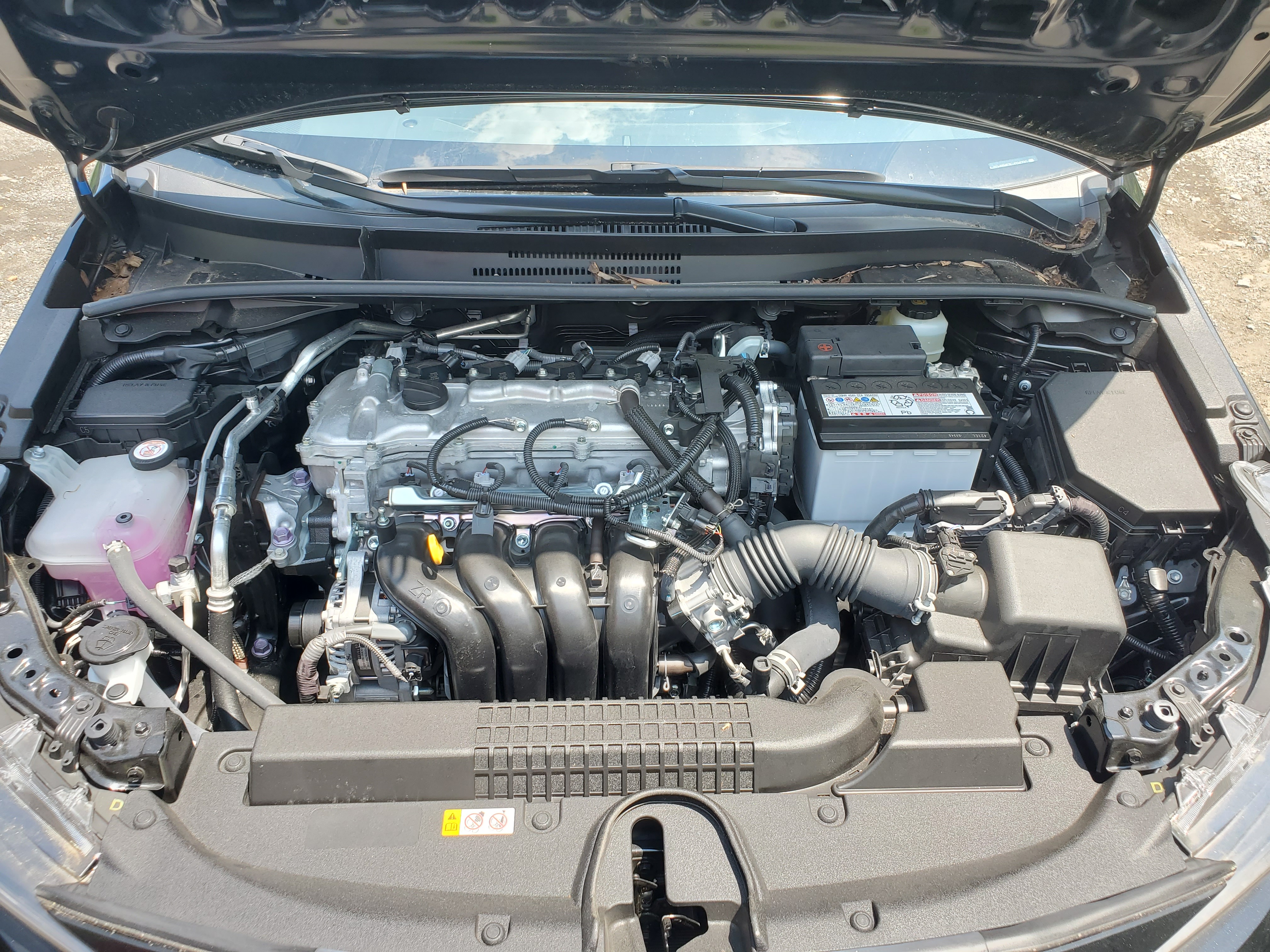
Mated to the novel two-stage CVT is a 1.8 liter 2ZR-FAE engine, which produces 140 horsepower and 126 lb-ft of torque. This engine is not particularly exciting, but moves the car well enough for normal driving, and delivers smooth power and effective torque most of the time. However, this 1.8 liter unit only delivers 33 EPA-rated miles per gallon, while the 2.0L M20A-FKS fitted to the SE and XSE trims delivers 169 horsepower as well as 34 mpg while still taking regular gas, making the 2ZR unit of the LE look a little lackluster. While the LE trim's powerplant is a perfectly respectable powertrain for an economy car, the SE offers a substantial value increase, which makes the LE feel a little less like a truly economy-focused option and a little more like a budget choice.
Let it be said, however, that in terms of the driver's user interface, the LE trim does not feel like a budget option. In addition to the entirely capable infotainment system, this Corolla also was equipped with a very competent driver assistance suite, most notably an adaptive cruise control system which also handles lane departure warning and assistance, making the vehicle extremely easy to drive on highways, at least ones with clearly visible lane markings. This system is remarkably capable, even by 2020 standards, and comes at a fairly reasonable MSRP of approximately 22 thousand dollars. The Corolla is clearly making the same value appeal that the Elantra GT hatchback was designed for, where a smooth, comfortable ride and quiet, yet somewhat capable powertrain add up to a car that succeeds at satisfying without exciting.
What does it all mean?
Cars occupy a curious set of roles in modern society, for they are not only a consumer market, but also a subset of planning and transportation policy, but yet they are also, on a personal level, artifacts of material culture that signify moments in economic, artistic, and technical history. All of these aspects blend together to make cars what they are now. It should be mentioned however, that cars are very much more than mere things, they are spaces to be and do within. Since their inception, cars have been fated, damned, blessed, required to be more than merely machines for moving people's bodies. They have always been machines that move our emotions, our social connections, our selves. And, as a car (note the four wheels and engine), the 2020 Toyota Corolla is subject to that fate, that damnation, that blessing, that requirement.
So how does the Corolla execute this aspect of its existence? Let us first start with one of the core theses of this blog project, that cars are texts. They are texts that impart meaning, not only to the people that drive them, but also to the people who ride in them and share space in the world with them, be it on the road, at a car meet, or on the quarter mile. It is simple enough to say that cars are a specific genre of textual meaning, that the automotive shell and suite of experiences and interactions is one that engenders a particular textual interaction, a particular frame of existence and meaning-generation. As this blog has pointed out time and again, the textual meaning, the literal set of communicated concepts, varies widely between cars, and this is only natural. One could then regard cars as a particular framework of communication, a particular genre constituted by the automotive toolkit of meaning. As Bawarshi & Reiff mention in their book Genre: An Introduction to History, Theory, Research, and Pedagogy, genres can be construed as "communicative events which help members of a discourse community achieve shared communicative purposes" that function as "forms of communicative action" when viewed through the lens of English for Specific Purposes (Bawarshi, 57). This of course focuses on genres, and the texts that inhabit them, as specific frameworks of communicative meaning, where their first function is as communicative events (Bawarshi, 58).
As an item of communication, where the imparted meaning is key, a couple aspects of the Corolla immediately stand out. Between its refined ride and engineering, yet budget-conscious design (especially the powertrain and the use of Toyota's TNGA architecture), and its user experience design, it shares elements of meaning with a few cars I have reviewed. First off, because of the perceived value inherent to the user experience, notably the slick infotainment, plethora of driver assistance and information options, and cabin refinement, the Corolla definitely appeals to the American car buyer's desire for a "good value car," one that is easily quantified as a smart purchase. Americans like to feel like they've won, like they've beaten the system and gotten a steal, and with a car like the Corolla, with all of its features and its refined, yet affordable design, one feels like they've stolen the deal of the century when in reality they only paid $200 under sticker price. Cars that impart this sort of meaning include the Nissan Altima and Hyundai Elantra GT. The other side of the Corolla's imparted meaning would be the predictable and docile nature of it; after all, few buyers of commodity economy cars want their car to be able to scare them. So with the Corolla's limited performance, even in its most powerful form, its mellow handling, and its intuitive and unassuming user interface, the Corolla is a car that, at a very fundamental level, is unwilling to surprise. Nissan's Kicks subcompact crossover is a fantastic example of this specific axis of car meaning, where its greatest strength is its ability to instantly welcome the driver, to provide them with an experience that cannot make them feel out of place or out of their depth. Therefore, as a communicative event, the 2020 Toyota Corolla tells its buyer and driver that they are buying into a safe, sensible experience, one that will protect them, not only from the world, but from themself.
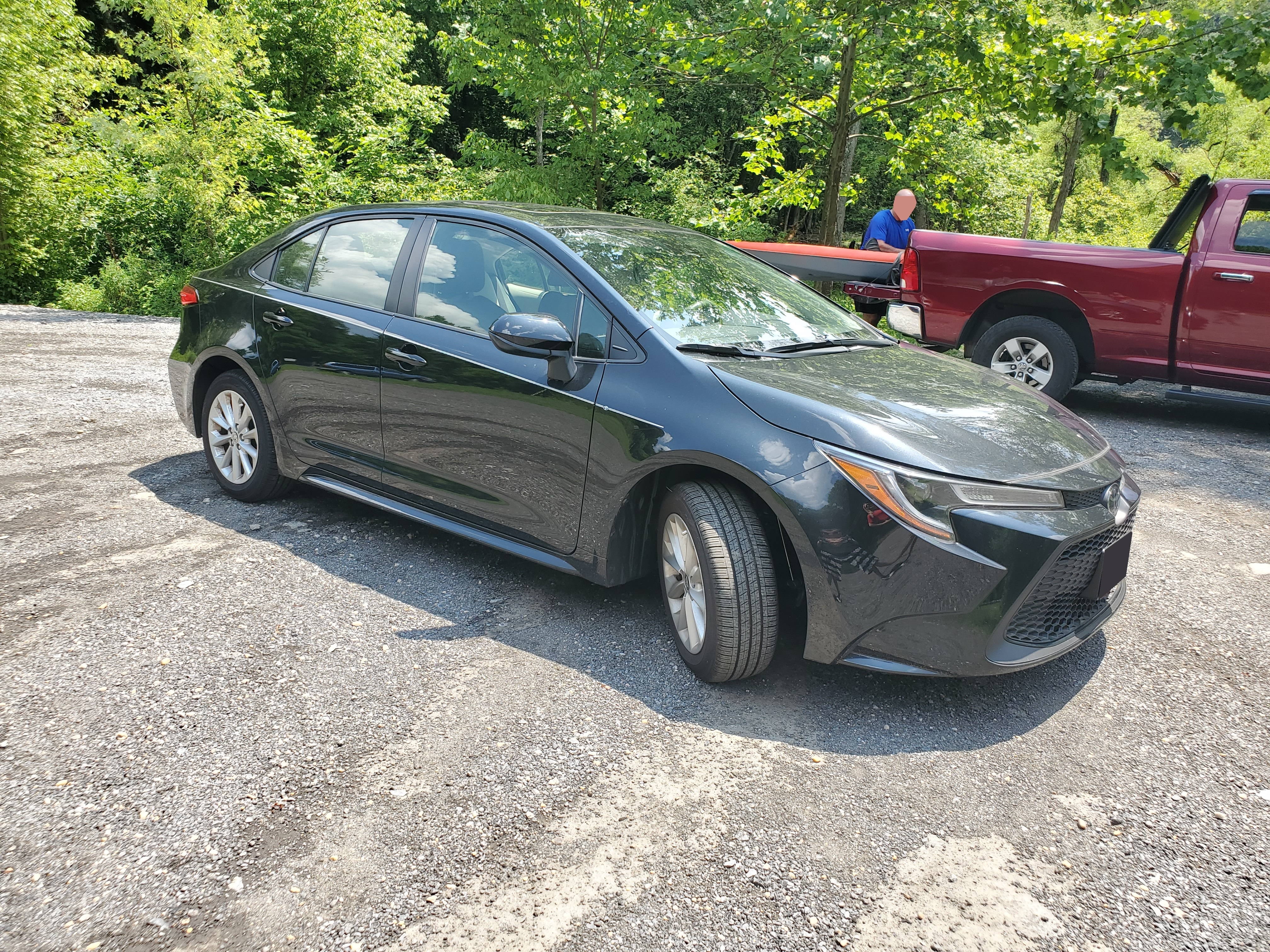
However, Bawarshi & Reiff go to great lengths in Chapter 5 of Genre to stress an alternate lens through which to view genre, that of Rhetorical Genre Studies. Through this lens, genres are viewed as "forms of social action," as opposed to being communicative acts (Bawarshi, 58). Through this lens, one views genres as "sociological concepts mediating textual and social ways of knowing, being, and interacting in particular contexts (Bawarshi, 59). If we view cars as a genre, as a particular framework through which meaning and action is imparted, then we should be willing to consider not only the communicative significance of cars, but also their social significance. It is of course impossible to deny that cars function in social spaces and activities; consider the way that cars as urban and periurban transportation policy compartmentalize and atomize the ability of people to traverse the world, much in the same way as the nuclear family compartmentalized child rearing and domestic life in mainstream American culture. So as an element of the genre that constitutes cars and the meaning they impart, what social action is the 2020 Toyota Corolla transmitting?
Bawarshi and Reiff are sure to point out that the rhetorical action of a text is one that addresses the exigence that creates it (Bawarshi, 63). The exigence that a car as a text, or as a representative of a genre, can inform, is a rather complicated one, due to the position that cars occupy in our culture. They are not only a market of consumer goods, but are also an axis of personal fashion, but are also a window through which to interact with the public, but also a way to connect with the world and the road. As such, a car's social action as a rhetorical device might inform any of these, making the rhetorical car analysis rather complicated.
Many things are complicated in life and love, however, so we shan't give up. Instead, for inspiration, we might turn to one of the most rhetorically charged cars this blog has ever discussed, the Prius Prime PHEV. I pointed out then that the Prius Prime's entire thesis, that of the "postmodern, eco-friendly version of the American Dream," is one that is constructed almost entirely by the behaviors that it informs in its driver. The Prius Prime provides active and passive user feedback and tuned experiences that train the driver to be a better hybrid driver, to think more along the lines of the car's design. The Prius Prime is a car which informs its driver on a more fundamental level than mere impressions and messaging, instead, it changes how they conceptualize the world and others. The ability of the Prius Prime to modify human behavior makes or breaks its success as an artifact, because missing those, it simply becomes an echo of the normal Prius, a car whose name has become a standby for fuel efficiency at all costs, namely driver engagement. Does the Corolla do this? Perhaps. Let us review the notable aspects of its user experience. It features a modern and intuitive infotainment system with respectable sound quality, fantastic noise, vibration, and harshness mitigation, not just for its segment, but in general, and a wide suite of driver assistance functionalities. All of these serve to disengage the driver from the outside world, and this does not happen merely on a sensory level, but is more subversive. The quiet, comfortable cabin, the sophisticated infotainment and driver assistance functionalities make daily driving comfortable, low effort, quiet, and safe. The driver is insulated from the road, from others on a discursive and conceptual level. Other cars take this even more seriously, with their limited visibility and plush seats. Contributing to this are the predictable, safe handling and soft, predictable throttle response, which mellow out even leadfooted driver inputs.
The Corolla presents a mellow, safe, insulating experience, and that makes sense! A car like the Corolla can't rely on a tall stance or the implied ability to drive offroad or run down gang members in order to make its driver feel safe; I mentioned this in my review of the Nissan Altima, too. Modern sedans must playact at luxury and sportiness, because those are the factors that they are inherently able to excel in relative to their taller, less fuel efficient siblings, while also compensating for their perceived safety deficit with a plethora of driver assistance functionalities. So what happens when your compact sedan, on a psychological level, tries to distance you from the outside world, from the road and the other people and cars occupying it? Perhaps it reinforces the ever-present spirit of American individualism. Perhaps it projects a sensation of secluded safety (which is painfully relevant in the day and age of the SARS-CoV-2 pandemic.) Or perhaps the effect is more benign; perhaps that psychological, sensory, and philosophical distancing serves to preserve the myth of the open road, that Valhalla of the American psyche. Either way, the Corolla is a car that modifies its own exigence (as a fashion item, appliance, extension of the self, etc) by directly informing the manner in which the driver positions it between themself and the world. The Corolla becomes a safe car because it makes the driver act as though it is safe. The Corolla informs driver behaviors that reinforce its positioning as a safe option, as the one canonical economical compact.
Genre by Bawarshi & Reiff can be found on the WAC Clearinghouse website.
Bawarshi, Anis S., and Reiff, Mary Jo. Genre : an introduction to history, theory, research, and pedagogy. West Lafayette, IA: Parlor Press, LLC, 2010.